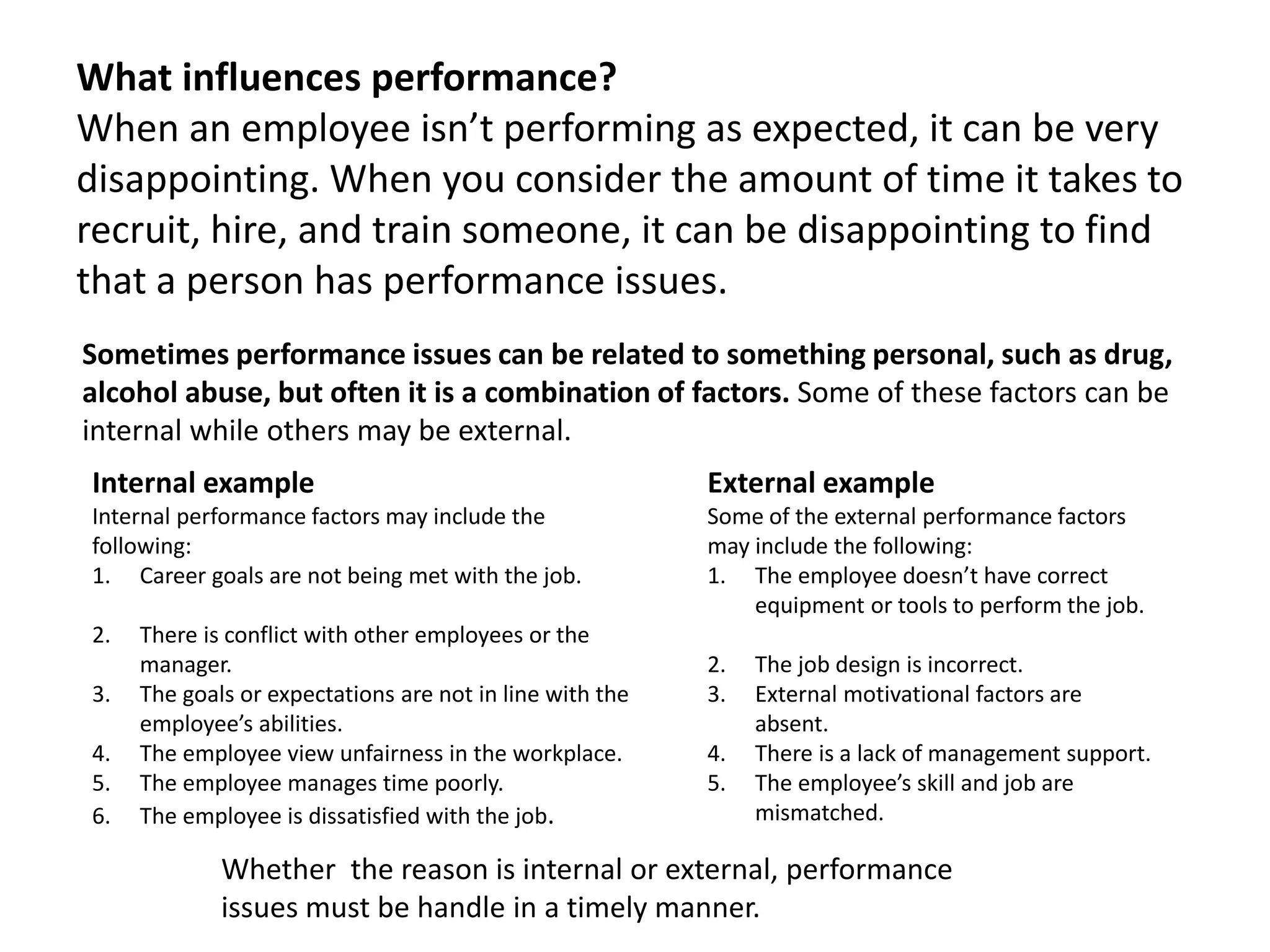An employee of the store manager, Darious Judue, has begun having problems showing up late and missing meetings. His performance initially improved but he then came to work smelling of alcohol and wearing the same clothes. When confronted, he claimed personal and family issues. Later he came to work drunk and denied it. The manager met with HR to discuss options according to the discipline process to ensure any firing is legal and fair. The summary ignores addressing the employee's issues led to limited options now.














